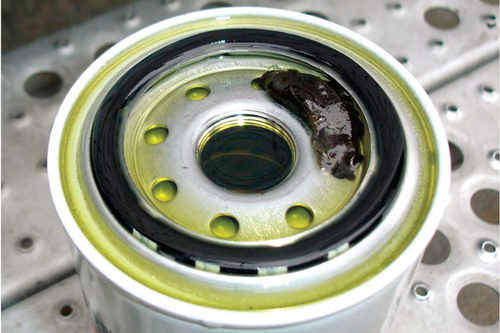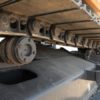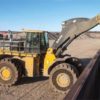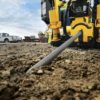The Importance of Fluid Testing
While the practice of fluid analysis has been around for some time, it has become more and more important in recent years due to the proliferation of advanced engine, transmission, hydraulics and fluid technologies in today’s construction equipment, which place much higher demands on fluid performance.
While this trend is primarily due to the high tolerances and extended fluid change intervals of today’s advanced machine systems, fluid analysis is a tried-and-true machinery management practice that can play an important role in a contractor’s business, regardless of whether the equipment is late-model or high-hour. Analyzing engine oil, fuel, hydraulic fluid and coolant can provide valuable insight into the condition and overall health of the engine, transmission and hydraulic systems, and can be used to diagnose potential issues before they become a problem on the job site.
As an example, if a machine has a leaking fuel injector seal, it could allow fuel into the crankcase. Fluid analysis can help identify that there’s fuel in the engine oil, which will allow maintenance professionals to work backwards to find the problem before it gets worse. Replacing a fuel injector seal is much less costly than a complete overhaul.
Who should use it?
Fluid analysis is already accepted as a best practice for managers of large equipment fleets, but businesses of all sizes should take advantage of the benefits that can be provided by a fluid analysis program. It is recommended for any piece of equipment that is essential to a contractor’s business—if the machine is out in the field making money every day, it makes perfect sense to protect that investment. Every hour of unplanned downtime on a jobsite cuts into a business owner’s bottom line severely, and a fluid analysis program can help identify issues that can lead to bigger problems down the line… at a mere fraction of the cost of a failure.
It is also a very common practice for rental houses to participate in fluid analysis programs. As machines regularly change hands with a variety of different users and applications, it makes sense for rental fleets to keep an eye on overall machine health. If a machine is out of service, they’re losing income.
How it works
Fluid analysis involves taking a small sample and sending it to a lab for tests that identify the overall condition of the fluid along with any contaminants. The resulting reports can give equipment owners and fleet managers a heads-up on a wide range of potential problems ranging from ineffective air filtration to deteriorating bearings.
While one sample can provide a snapshot in time of overall system health, the real value for equipment owners is seen in trend analysis over time. It is recommended that engine oil samples should be sent for analysis every 250 hours, hydraulic and transmission fluid every 250 to 500 hours, and coolant be tested annually.
Important to note: it is also critical to properly pull the sample as detailed in the instructions of each kit. Improper pulling of each sample can lead to the introduction of other contaminants and ruin the integrity of the sample.
Engine oil
Engine oil samples are analyzed for the presence of materials that can indicate a variety of problems. Some of the primary issues looked for are coolant or fuel leaking into the system. Also, a high level of silica in a sample could indicate the failure of an air filter or one of the intake components. As an example, if there is a leak in one of the intake tubes that is allowing air to bypass the filter, it could cause a catastrophic engine failure.
The testing procedure can also identify types of metals found in the oil. There’s always going to be some sort of wear component material in the testing results due to the nature of combustion engines, but identifying what type of metal is found helps to identify the area and/or component where any potential issues may be occurring.
Trend analysis is the best indicator when it comes to oil analysis. A fleet manager can see that a machine is typically tracking at a certain level. If, all of a sudden, there is a spike in fuel ingestion or some other irregularity in the data, that is a clear indicator that there’s a problem.
Transmission and hydraulic oil
Transmission and hydraulic oil sample analysis primarily looks for the presence of wear metals—namely copper, bronze and other soft metals—as well as dirt in the drive lines. Identifying certain types of metals can help identify damaged components within the system.
The presence of dirt is also a clear indication of a leak in a hydraulic cylinder. If something like this is allowed to progress without intervention, it can lead to a variety of problems in the hydraulic system—filter plugging, valve plugging, reduced hydraulic response—all of which will hurt a machine’s productivity. Analyzing the hydraulic oil can help to determine whether the issue is being caused by a relatively cheap component, like a seal on a cylinder, or by a more expensive component like a hydraulic pump.
Moisture is also a critical issue when it comes to transmissions, because most pieces of equipment are going to carry 50-60 plus gallons of fluid. When a machine is shut off, as it cools it can draw in condensation. A typical transmission doesn’t get hot enough to really burn that moisture off, so corrosion can be an issue inside of a transmission if the proper fluid is not used.
Coolant
With engine operating temperatures increasing with today’s newer machines, the maintenance of a cooling system is critical. Coolant analysis is a different situation, in that the lab isn’t necessarily looking for materials from wear components. While it will pick up the presence of oil, fuel or other potential indicators, the test focuses primarily on corrosion levels, conductivity and pH levels.
Coolant analysis can also identify the build-up of hard water in the system, as well as determine the levels of coolant additives to see if a system has the right level of liner protection.
An aside on coolants: with the advent of Tier 4 Final engines, many machines have switched over to extended life or Organic Acid Technology (OAT) coolants that cannot be mixed with other types of coolants. It’s important to know the type of coolant you are working with.
Diesel fuel
Fuel system health is, arguably, the most critical maintenance topic impacting fleet managers today. The use of high-pressure common rail technology combined with the after-treatment systems have elevated the need to pay attention to what is being put into the fuel system. The days of $35 injectors are gone – upkeep and repair has become considerably more expensive. Biofuels and the presence of diesel soaps further create opportunities for fuel quality issues. Fuel testing can go a long way in determining the quality of the diesel being sourced and placed into your machine.
The fuel injectors of today’s high-pressure common rail engines are running at higher pressures and temperatures than ever before. Any amount of water in the fuel system can greatly enhance problems at the nozzles. Water or dirt in the fuel system will cause loss of power and the potential for damage to fuel system components.
In addition to testing for the presence of water, a fuel sample will also be analyzed for the presence of dirt and microbes. Fuel tanks—especially if there is any small percentage of water in them—are ideal breeding grounds for microbial life, and this is becoming more and more prevalent due to the use of low-sulfur fuel. Sulfur acts as a poison to the microbes that can build up in fuel systems, so the lower percentage of sulfur in today’s fuel does not kill them as effectively as it has in the past. Any kind of advanced microbial growth can build up and completely plug a fuel filter if it is not addressed.
Fluid testing kits
Some manufacturers provide a variety of fluid testing kits for their customers. CASE Construction Equipment offers a 4-in-1 Systemgard Fluid Analysis Kit that tests engine oil, coolant, transmission/hydraulic oil and diesel fuel. The kit includes all the materials—bottles, tubes, mailer package etc.—as well as instructions on how to draw samples and send to our lab for analysis.
Systemgard labs are ISO 17025 A2LA accredited – the highest level of quality attainable by a testing lab, backed by the most stringent accrediting body in the industry. Each test report provides severity codes and troubleshooting recommendations, and severe findings are communicated immediately via e-mail or fax. Once the fluids arrive at a lab, it typically takes only 24 hours for an equipment owner to receive their report.
Additional benefits
In addition to being a valuable preventative maintenance tool, one of the greatest benefits of a continuous fluid analysis program is that it can help maintain or increase the resale value of a machine. Fluid analysis provides records that can detail the life of the machine, and is an indication that the machine has been properly looked after, which can justify higher equipment resale values.
Another consideration is the value of fluid analysis on older equipment. If a high-hour machine has recently had an overhaul, or a new pump installed, it’s a great time for an equipment owner to consider starting a fluid analysis program. The idea of protecting an equipment investment doesn’t end with the manufacturer warranty, and the most critical machines in an equipment owner’s yard—whether they’re brand new or 15 years old—should always be considered as candidates for fluid analysis.
Fluid analysis programs are becoming an important component of fleet maintenance for contractors and businesses of all sizes. The ability to identify dirt, wear particles, fuel dilution and other contaminates that cause costly failures can help extend the life of a machine, reduce replacement costs and ensure equipment reliability and uptime.
